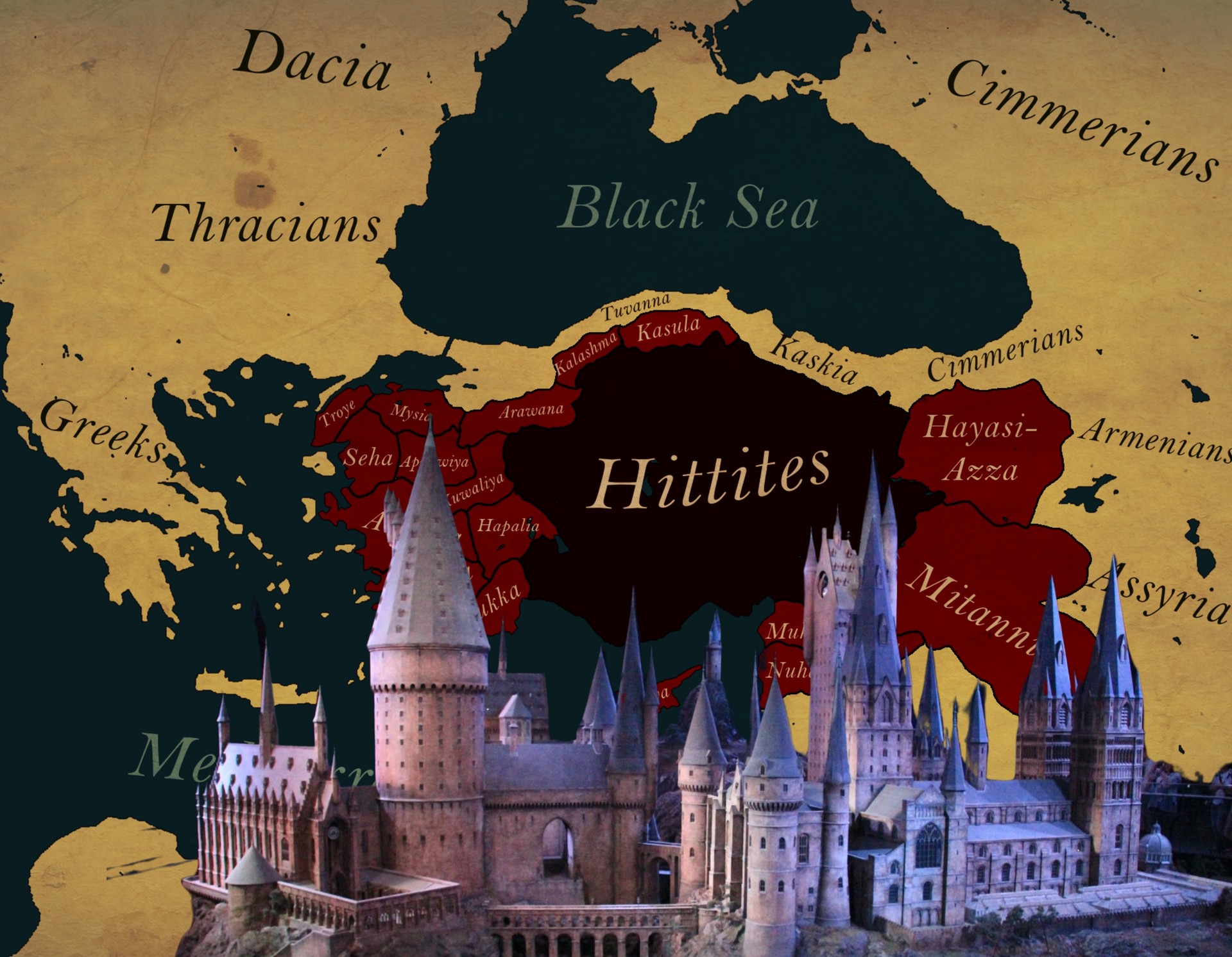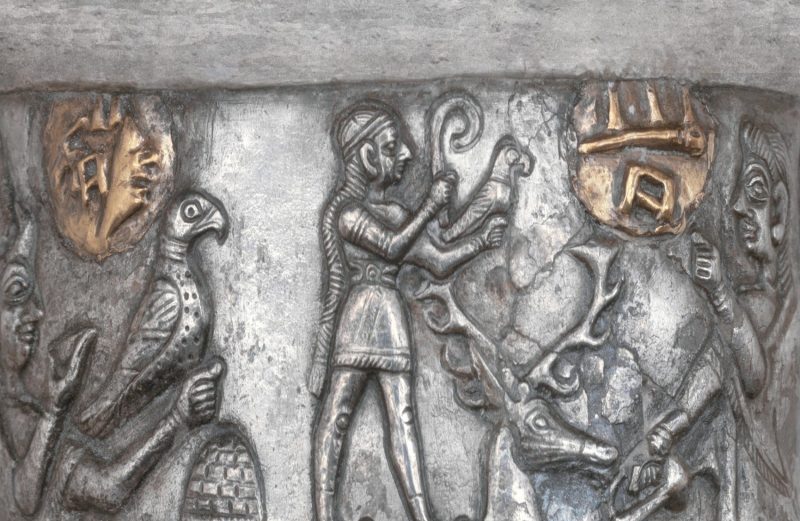
Magic, as old as human history itself, played a significant role in the daily lives of ancient societies. According to anthropologist S. J. Tambiah, boundaries between religion and magic are difficult to define, particularly in pre-modern societies. Malinowski argues that magic emerged when human efforts to control nature proved insufficient.
In Hittite society, magic was almost regarded as a public service, with magicians occupying roles akin to public officials.
Let's focus on the role of magic and sorcery in Hittite society, with particular emphasis on the rituals performed by the Kizzuwatna-born sorceress Mashtikka.

In the Hittite State Archives, among texts covering a wide range of topics, rituals related to magic occupy a prominent place. In Hittite thought, magic was an attempt to protect oneself from the harmful effects of supernatural forces and to manipulate these forces to one's advantage or to harm others.
The concept of magic was introduced to the Hittites primarily from the Hurrian and Luwian-speaking regions in southern and southeastern Anatolia, especially from Kizzuwatna. Hittite texts provide striking examples of the impact of magic on Hittite social life. Many issues now considered within the realms of medicine, psychology, and law were addressed through the concept of magic in Hittite society.
In ancient societies, magic was generally divided into two categories: white magic (beneficial and healing) and black magic (malevolent and harmful). Black magic was always seen as something to be fought against, and black magicians were often cursed. This distinction was not only present in ancient societies or Hittite civilization but persisted through history in the ongoing struggle between "good" and "evil."
Magic, with its intertwined practices of health and folk medicine, served many societies, while black magic maintained its frightening reputation. Historical debates on witchcraft and black magic in Europe are significant examples of how magic and magicians were used in politics. In China, official Wu magicians existed alongside self-taught magicians who were respected among the people but not well-regarded in Taoist circles. Confucianists labeled Taoists as devil-worshippers, animists, and atheists, while Taoists admitted occasional failures in their battles against evil spirits.
In Hittite society, although the positive effects of white magic were recognized, black magic was deemed dangerous and punishable by death. According to the Hittite Laws, black magic was defined by actions such as placing remnants from ritual purification in someone else's house or field instead of burning them, or killing a snake and mentioning another person's name. Those who practiced black magic were considered to have committed a serious crime and were punished by death. The approach to counter black magic was noteworthy: efforts were made to dismantle and reverse the magical effects through counter-magic.
In fact, there was little difference between black and white magic in terms of the power and methods used. The distinction lay in whether the magical abilities were used for good or evil, leading to the categorization of actions as white (good) or black (evil).
Consequently, black magic was considered something to be kept away from society, and those who practiced it were punished by death. The treatment of individuals affected by black magic was carried out through white magic, which was especially significant in the royal class.
Numerous incidents in Hittite history were attributed to black magic. One of the earliest references to opposition against magicians comes from the will of I. Hattusili, one of the early kings of the Old Hittite State, who harshly criticized "sorcerers." On his deathbed, Hattusili requested that his wife bury him without consulting a sorceress and warned her to be cautious of such individuals. The decree by another contemporary king, Telipinu, banning magic can be seen as a legal codification of Hattusili's prohibition against sorcerers.
The role of magic in the Hittite State became better documented from the Middle Hittite Period circa 1400 B.C. Magic rituals emerged as a result of the Hurrian-Luwian shared culture in Kizzuwatna and found application in the Hittite State. During this period, there were many magic rituals related to court intrigues and murders, among other issues. Magic was invoked for a wide range of issues from headaches and coughs to purification of the king and queen and family disputes.
Magicians held a significant place in Hittite social life, and the variety of issues requiring magic led to specialization among magicians. During outbreaks in the army, the magicians consulted were Ashhella; in times of hardship, Hantitassu; and for family conflicts, Mashtikka.

Among prominent female magicians in Hittite society, Mashtikka from Kizzuwatna stands out. Beyond her role in magical practices, Mashtikka held a special place in Hittite social life due to her expertise in "purification through magic," encompassing five distinct ritual practices.
Mashtikka's magical rituals were characterized as "white/good magic" aimed at rescuing the victim (EN/BEL SISKUR/SISKUR or sacrificial owner/ritual patron) from adverse conditions. The purpose of white magic was to stop the power coming from the source of evil, remove the evil from the victim, and eradicate it permanently.
Mashtikka's magical rituals can be classified into the following categories:
Documents related to Mashtikka reveal that she performed a variety of magical acts, from reconciling family disputes to preventing murders and countering malicious words. Mashtikka was arguably the most sought-after sorceress of her time.
These rituals were employed to address various social and individual issues. Understanding Mashtikka's magical expertise and the societal issues that necessitated such magic reveals the importance of these practices in Hittite society.
The systematic approach, techniques and materials used in Mashtikka's rituals provide insights into their effectiveness. The diversity and abundance of ritual materials played a crucial role in achieving the ritual's goals, as satisfying the gods was vital for success. Care was taken to avoid creating new contamination by removing ritual materials from the environment. This requirement was codified in laws: "If someone performs a purification, they should take the remaining materials elsewhere rather than burning them; if someone takes these to a field or house, it is considered magic (and) the king will judge."
To avoid new contamination, ritual locations were chosen as unplowed and uninhabited areas. As stated in the Tunnawi ritual: “Places where no farming is done (and) where plows have not reached…”
Materials used in magic were removed from the environment through practices such as breaking, burning, imprisoning, killing, fragmenting, and burying. Ultimately, the expertise of Mashtikka in sorcery was central to the success of her rituals.